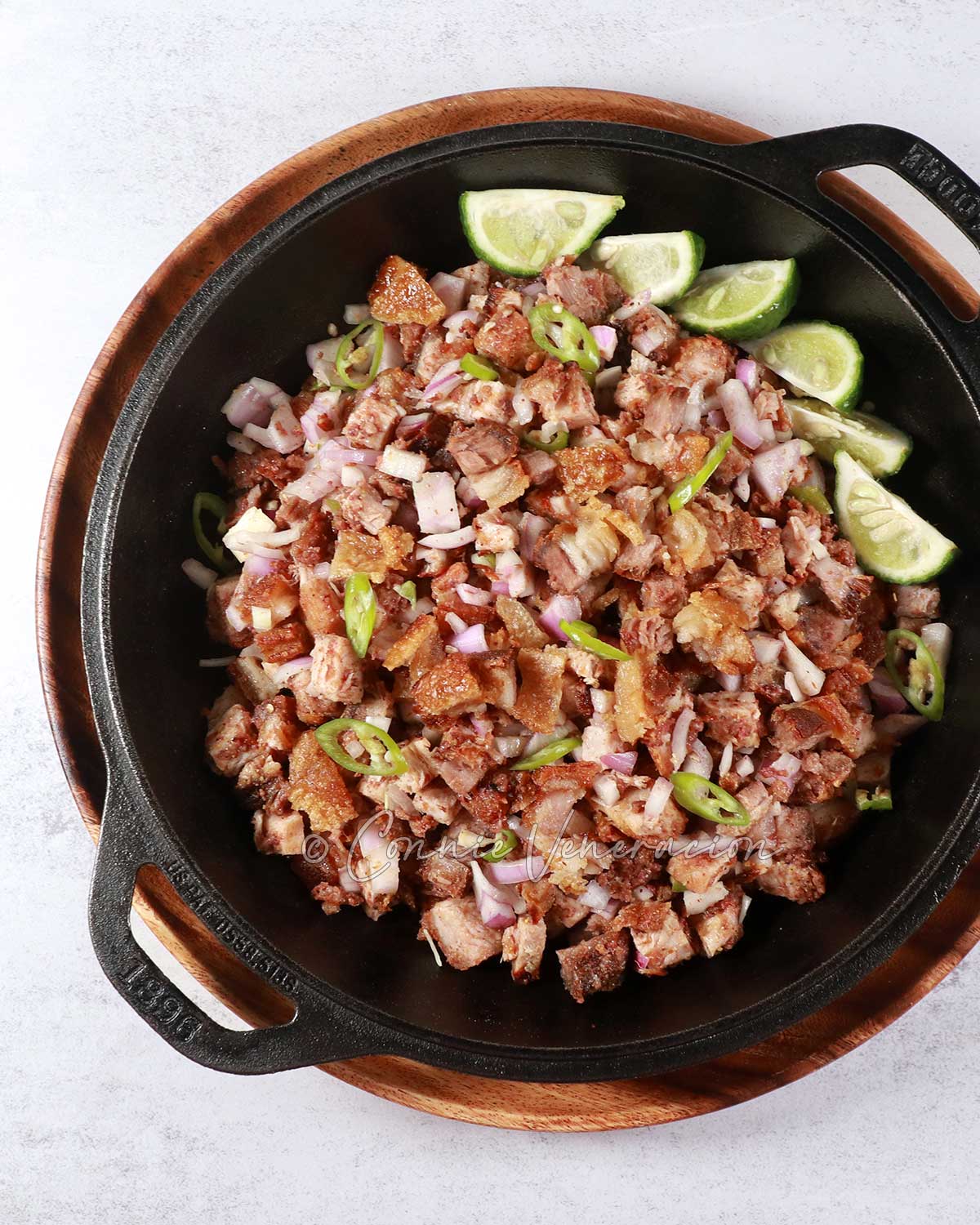What is sisig, exactly?
The word sisig predates the sizzling chopped pork dish that it has become associated with. In the province of Pampanga in Central Luzon, sisig originally meant to snack on something sour.
An Augustinian friar recorded that the word sisig has been in use prior to the 18th century.
Sisig is more of a cooking process rather than just the dish. Sisig can be anything, but the keywords are: sour and snack.
Sinupan Singsing: Center for KapampanganCulturalHeritage
Green mango, guava and tamarind, for instance, are popular snacks in the Philippines. As with most dishes in any cuisine, sisig later evolved to include meat which was still served sour and eaten as a snack. But the sizzling pork sisig that caught the attention Filipinos outside Pampanga did not materialize until the mid-1970s.
Aling Lucing’s pork sisig
Back in the days when Clark Air Base in Angeles City was a busy U. S. Air Force hive, huge supplies of food were delivered to feed the American troops and base personnel. Because Americans were not fond of offal, pig’s heads were given away by the commissary.
An enterprising cook, Lucia Cunanan, fondly called Aling Lucing, boiled and grilled the ears along with the cheeks, chopped them, tossed them with onion, and seasoned the mixture with calamansi juice and vinegar. She served her concoction in her carinderia as an accompaniment to beer. And sisig, as we non-Kapampangans know it today, was born.
How we make crispy pork belly sisig at home
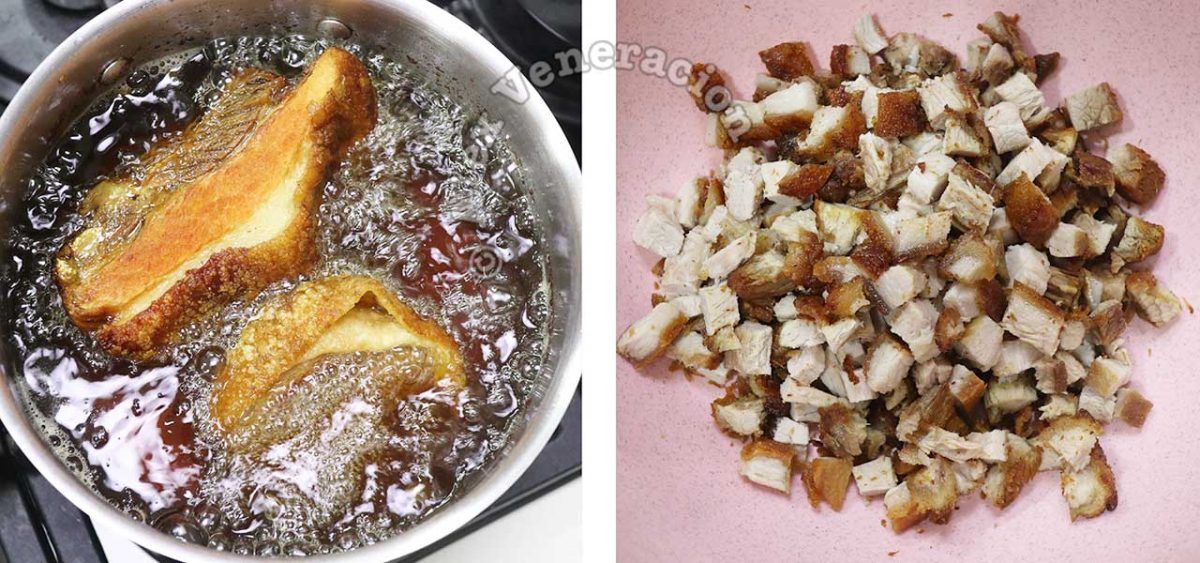
For cooking lechon kawali (Filipino-style crispy pork belly), you may either deep fry an uncut slab of boiled pork belly, roast it in the oven or air fry it. These days, we use the air fryer exclusively for this step.
Air fried lechon kawali (crispy pork belly)
Simmer a slab of pork belly, drain and transfer to the air fryer. Thirty minutes later, you have perfectly cooked crispy pork belly with crackling skin.
If you can source frozen bagnet (the lechon kawali of the Ilocos region in northern Philippines), just thaw and reheat in hot oil or the air fryer. That should make the preparation of crispy pork belly sisig even easier and faster.
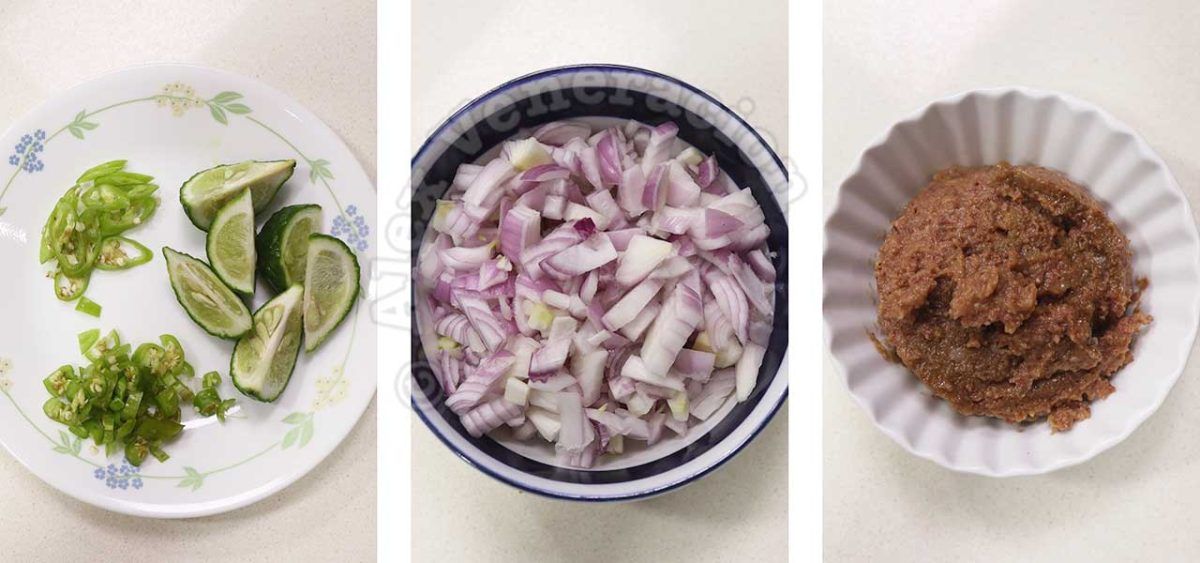
You need chilies, shallots and liver spread (canned is okay). Six finger chilies are used in this recipe — half were chopped and tossed with the pork while the rest were sliced and sprinkled on the sisig as garnish.

To assemble the sisig, place the chopped crispy pork belly in a large bowl, dump in the liver spread and mix lightly but thoroughly to coat every piece of pork with liver spread.
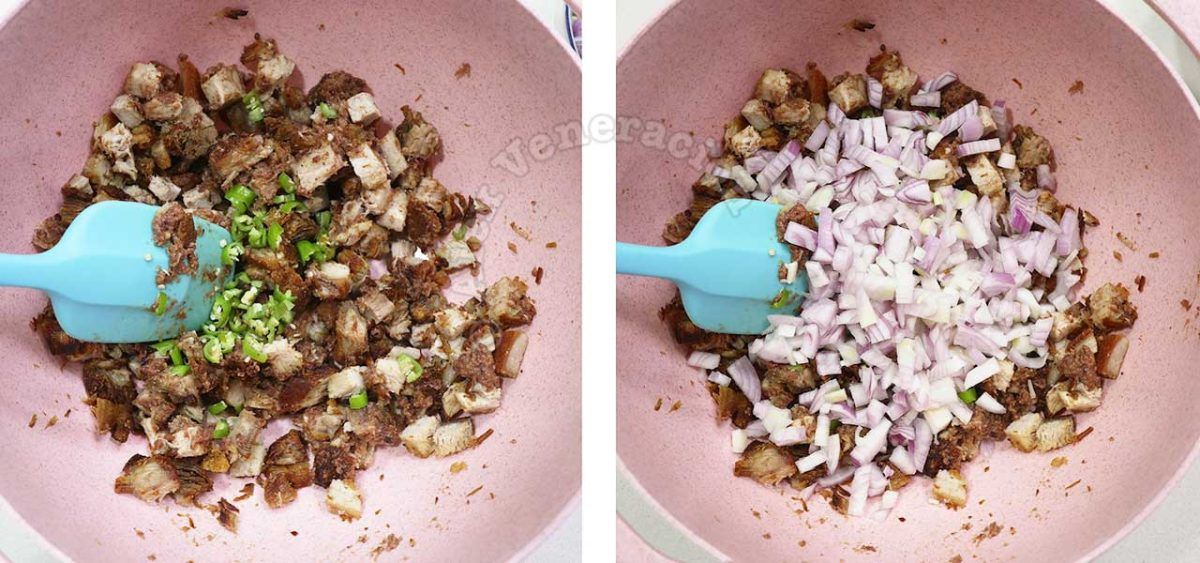
Then, add the chopped chilies and shallots, and toss to distribute evenly.
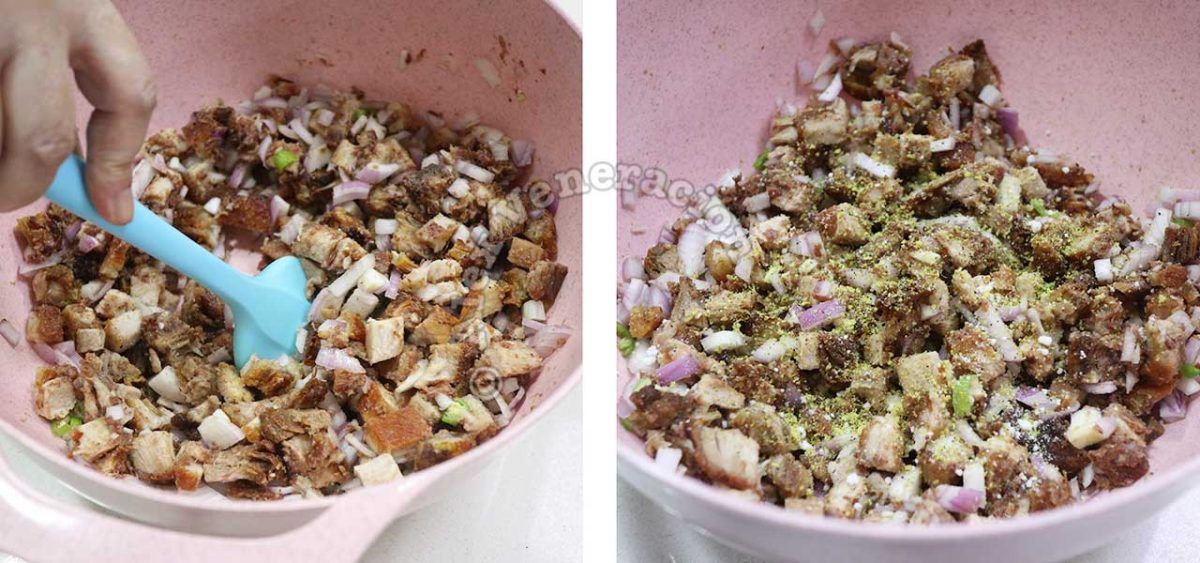
Now all the sisig needs is seasoning. Drizzle in calamansi juice, add salt and pepper and toss well. If you happen to have lemon pepper seasoning, use that in place of plain salt and pepper. The grated lemon zest in the seasoning gives the sisig a heightened citrusy flavor and aroma.
Crispy pork belly sisig
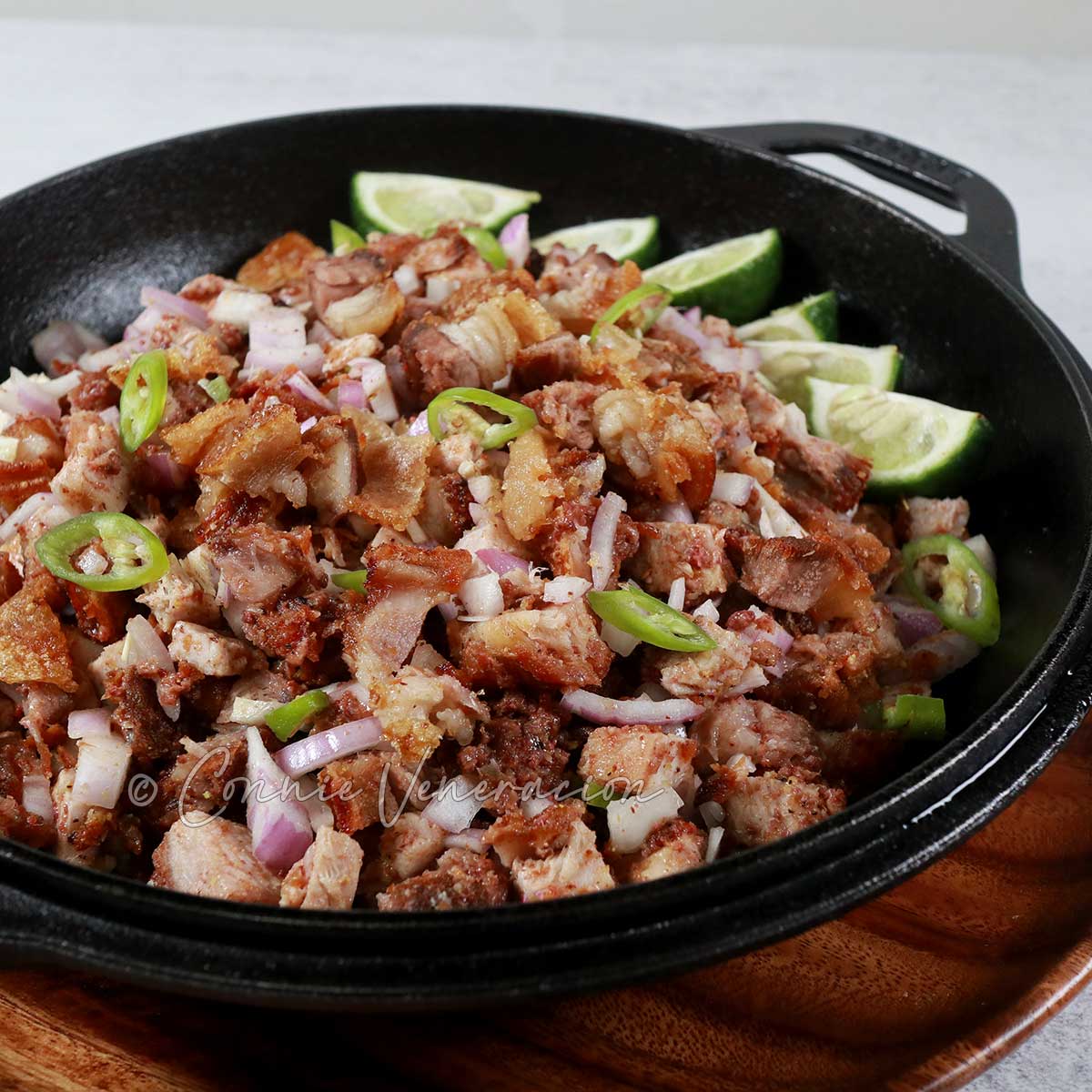
Ingredients
- 600 to 700 grams crispy pork belly fully cooked
- 6 finger chilies
- 4 shallots
- 1 small can liver spread
- 8 to 10 calamansi or four limes, squeezed to get the juice
- 1 ½ teaspoons lemon pepper seasoning or substitute one teaspoon salt and half a teaspoon of pepper
Instructions
- Chop the crispy pork belly.
- Roughly chop five of the finger chilies, and thinly slice the remaining.
- Peel and chop the shallots.
- Add the liver spread to the chopped crispy pork and toss to distribute evenly.
- Add the chopped chilies and shallots, and toss.
- Sprinkle in the lemon pepper seasoning (or salt and pepper) and toss again.
- Finally drizzle in calamansi or lime juice (start with three tablespoons) and toss well.
- Taste. Add more salt and pepper, if needed, and the rest of the calamansi or lime juice for a tart and boldly flavored crispy pork belly sisig.
- Garnish with the sliced finger chili and serve with calamansi halves of lime wedges on the side.

